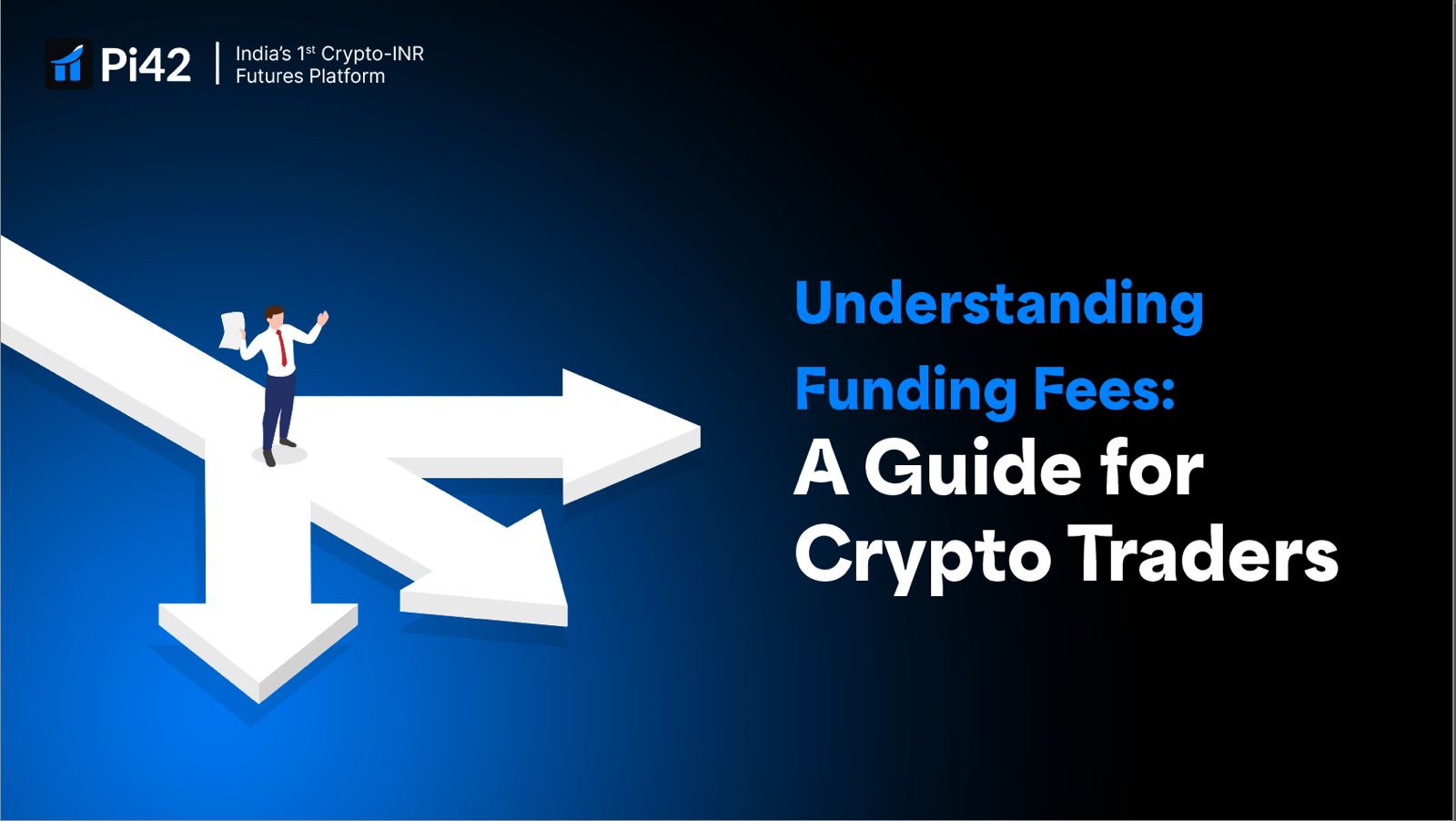1. What are funding fees?
Funding fees are periodic payments exchanged between buyers (long positions) and sellers (short positions) of perpetual futures contracts. These fees aim to maintain the balance between the price of the perpetual contract and the underlying asset’s spot price.
2. How often are funding fees exchanged?
The frequency of funding fee exchange depends on the specific token pair.
For every 8 hours, it is triggered at 5:30 AM, 1:30 PM, 9:30 PM
For Every 4 hours, it happens on 1:30 AM, 5:30 AM, 9:30 AM, 1:30 PM, 5:30 PM, 9:30 PM.
3. How are funding fees calculated?
The funding amount for each contract is calculated using a formula that considers:
- Nominal Value of Position: This is determined by multiplying the mark price by the contract size (applicable to INR margined contracts).
- Funding Rate: The Funding Rate consists of two main parts: the Interest Rate and the Premium / Discount. This rate aims to keep the traded price of the perpetual contract in line with the underlying reference price. The perpetual contract may trade at a significant premium or discount to the Last Price. In those situations, a Premium Index will be used to raise or lower the next Funding Rate to levels consistent with where the contract is trading.
4. When am I liable to pay funding fees?
You are only responsible for funding fees if you hold an open position (long or short) at the specific funding time for that contract. If you don’t have an open position, or you close it before the funding time, you won’t incur any fees.
5. How can you earn funding fees, and when do you have to pay the funding fee?
When the funding rate is positive, the price of the perpetual futures contract is higher than the underlying asset price; thus, traders who are long pay for short positions.
Conversely, a negative funding rate indicates that perpetual prices are below the underlying asset price, which means that short positions pay for longs.
In both scenarios, a trader can receive or pay funding fees depending on the direction of their position
Pay funding fees (positive funding rate): If the perpetual contract price is higher than the spot price (indicating a bullish market sentiment), long position holders pay funding fees to short position holders.
You’ll incur funding fees if you hold a long position during a period with a positive funding rate. This scenario happens when the price of the perpetual futures contract is higher than the spot price.
Here’s why you pay in this situation:
- A positive funding rate suggests a market sentiment favouring a price increase.
- By holding a long position, you’re betting on the price to rise.
- The exchange discourages this bullish stance by making long position holders (like you) pay funding fees to short position holders (who are betting on the price to go down)
Receive funding fees (negative funding rate): Conversely, if the perpetual contract price is lower than the spot price (indicating a bearish market sentiment), short position holders pay funding fees to long position holders.
You can earn funding fees when you hold a short position during a period with a negative funding rate. This scenario typically occurs when the price of the perpetual futures contract is lower than the spot price of the underlying asset.
Here’s why you earn in this situation:
- A negative funding rate indicates a market sentiment leaning towards a price decrease.
- By holding a short position, you’re betting on the price to go down.
- The exchange incentivises this bearish stance by making long position holders (who are betting on the price to go up) pay funding fees to short position holders (like you)
The funding rate determines whether you earn or pay funding fees, not the direction of the underlying asset’s price movement itself.
You only pay or receive fees if you have an open position at the specific funding time for the contract.

